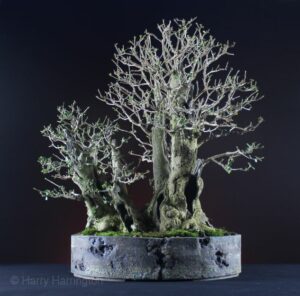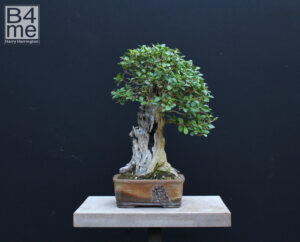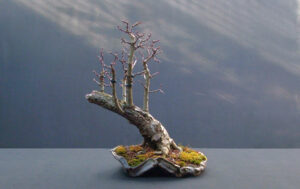
The newly collected Cypress with its roots still bagged up
This Chamaecyparis was found in a friends’ garden in early Spring of 2001.
Apparently, as is typical of the many False Cypress/Chamaecypris planted during the 1970’s in the UK, it had grown quite slowly for the first ten years it had been in her garden but had then become very vigorous and had outgrown its allotted space, its height reaching over 12 feet. Having decided to collect it, I dug around the rootball to find that it consisted entirely of fine roots which I would be able to keep; their presence probably as a result of the wet ground it was found growing in.
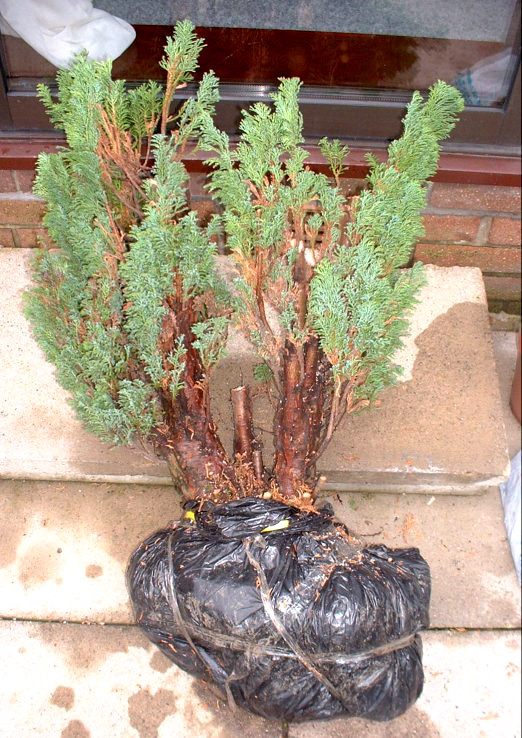
After pruning away surplus branches and trunks
Once home, I removed all but the two thickest trunks/suckers that had developed (as is usual for Chamaecyparis). I was fortunate to have many low branches to use in the future as Chamaecyparis rarely back bud at all, let alone from the trunk.
At this point I was able to count off the growth rings from the area of trunk that I had chopped, this left me with the reasonably accurate age of 30 years.
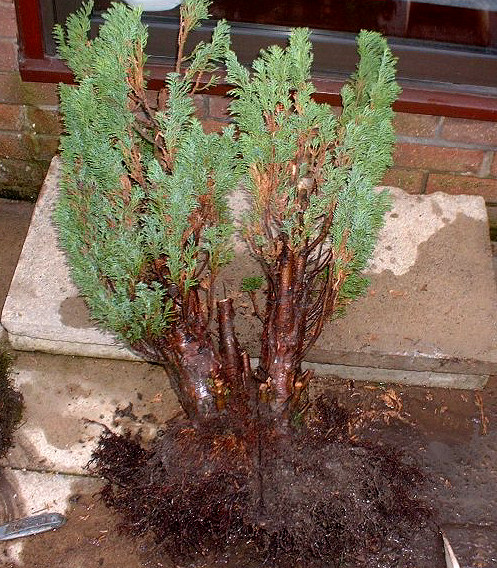
Splitting the two trunks using a large-toothed saw
The two remaining trunks were then separated to make two separate bonsai
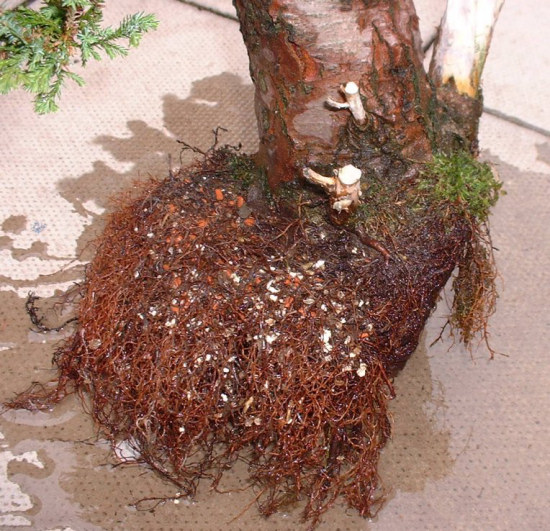
The rootball of the tree that is subject of this bonsai progression series

The tree at this point was around 2ft tall. The tree was potted up into a mixture of sphagnum moss and fast-draining, inorganic bonsai soil and allowed to recover for a year
A year later and the tree had responded very strongly; the mass of fine root collected with the tree had obviously helped it through any transplanting shock.
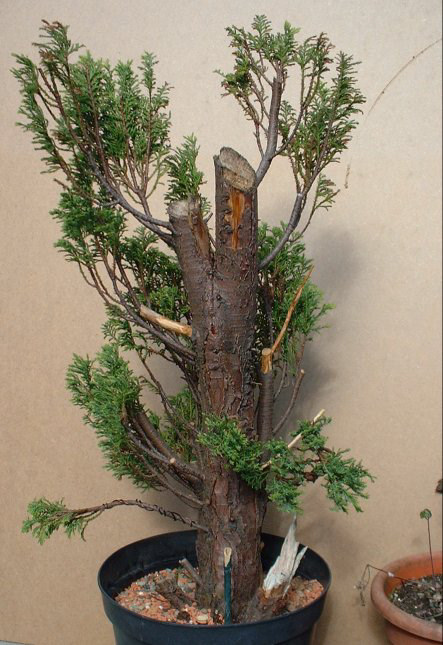
Initial styling of the tree began in March 2002
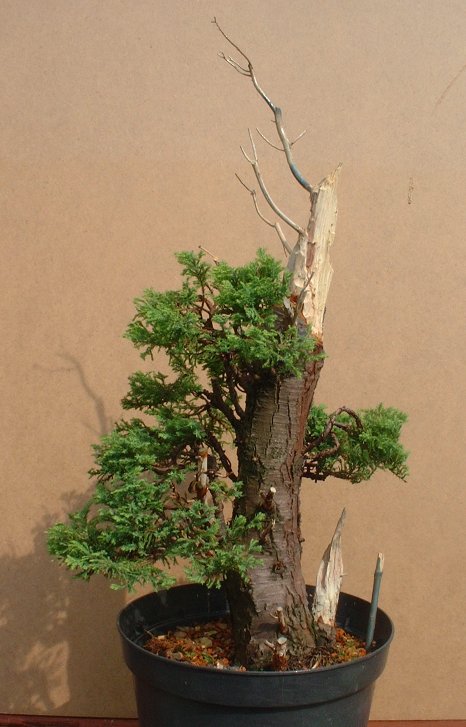
The branches were then wired into preliminary positions before I began shaping the top of the trunk.
The trunk was very straight and taper needed to be carved into the deadwood as well as some movement. There was also some reverse taper near the top that needed removing.

September 2002, the foliage had filled out well. The top of the trunk had movement and taper carved into it; the beginnings of a shari down the right hand side of the trunk had also been started. Carving had been carried out by pulling away the fibres of wood with jin pliers and with the use of various carving bits. After carving, the the deadwood was treated with lime sulphur and a coat of wood hardener.
Despite the tree still growing vigorously, I left it to rest and regain any strength lost before the onset of Winter and repotting in the Spring.

The Chamaecyparis in September 2003, 3 growing seasons after collection and a year after the picture above was taken.
In early 2003 the tree was repotted into a tokoname pot. The right hand branch was removed; the remaining foliage growing from just 3 primary branches. The shari had been extended to the base of the trunk and will be widened in future years as the live portions of the trunk strengthen and thicken. Finally, the long jin at the top of the trunk was removed. Chamaecyparis are a very thirsty species compared to most other coniferous species, and this tree benefits from frequent misting and requires regular watering.

I wasn’t entirely happy with the look of the bonsai by the Winter of 2004, the foliage had become too heavy for the design and white of the deadwood was too bright.
In the early Spring of 2005 the tree was heavily pruned back and then allowed to recover for the rest of the year.
This last image shows the tree in June of 2006 prior to it being sold, the deadwood having mellowed and the foliage mass considerably lightened.
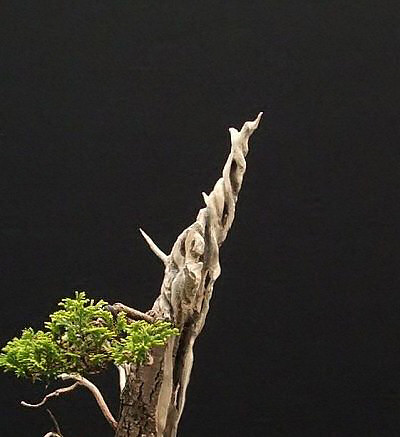
Detail of the carved-jin at the top of the bonsa

